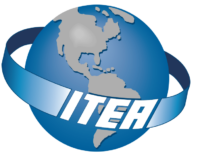DECEMBER 2023 I Volume 44, Issue 4
Volume 44, Number 4
DECEMBER 2023
Volume 44 I Issue 4
IN THIS JOURNAL:
- Issue at a Glance
- NEW Editor Welcome
- Chairman’s Message
Conversations with Experts
- Memories from a Career in Army T&E: A Conversation with Dr. James J. Streilein
Workforce of the Future
- Workforce Development in Test and Evaluation
Technical Articles
- Tailoring the Digital Twin for Autonomous Systems Development and Testing
- Accelerating Image Recognition Using High Performance Computing
- Developing Model-Based Flight Test Scenarios
News
- Association News
- Chapter News
- Corporate Member News
The December issue of the ITEA Journal marks an important time of transition. This issue is the fourth installment of our online Journal, marking the completion of the first full year of our electronic offering. Additionally, this issue will be my last as Editor-In-Chief. I am pleased to turn over leadership of the Journal to my colleague Dr. Keith Joiner. It has been an honor to serve in that role for the past four years.
I look forward to where the Journal will go in the future with contributions from across the T&E community. It has been a pleasure working with the ITEA leadership and management teams as we shaped a shared vision of a new Journal. Thank you to the publications committee for their continued work in helping identify articles and craft new columns such as our “Workforce of the Future” and “Conversations with Experts.”
In this issue of the Journal both of our new columns continue. In Conversations with Experts, with Dr. J. Michael Barton interviews Dr. James J. Streilein and they discuss his career in Army T&E. Our workforce of the future articles is by Camille Holley (University of Memphis) and Natalie Heinrich (Virginia Tech). In it they discuss their experiences learning about the profession of T&E through a summer internship at the Department of Homeland Security.
Several technical articles relate to the issues’ theme “T&E for Emerging Technologies,” in particular digital transformation and artificial intelligence.
In our first technical article, “Tailoring the Digital Twin for Autonomous Systems Development and Testing” the authors discuss the emerging concept of using digital twins for autonomous systems. They highlight that, “digital twins must be focused on modeling and simulating the environment not so much as the human perceives it, but as the machine perceives it.” The paper illustrates the concept for testing task performance on driving a Palletized Load System (PLS).
In our next article, “Accelerating Image Recognition Using High Performance Computing” the authors demonstrate the utility of a high-performance computing (HPC) environment for shaping evolving software products into new Department of Defense capabilities. The article illustrates this value through training against a large dataset, which provides improved generalization properties. The machine learning models have wide potential in face recognition, security, visual surveillance, and biometrics.
In our final technical article, “Developing Model-Based Flight Test Scenarios” the authors develop flight test scenarios based on model-based systems engineering artifacts. They illustrate the process on an Air Force training system. The paper provides a clear comparison between traditional test design and model-driven test design processes.
To round out this issue at a glance, I have asked Dr. Keith Joiner to provide a few words of introduction, please join me in welcoming him as the ITEA Journal Editor-In-Chief.

- Join us on LinkedIn to stay updated with the latest industry insights, valuable content, and professional networking!



